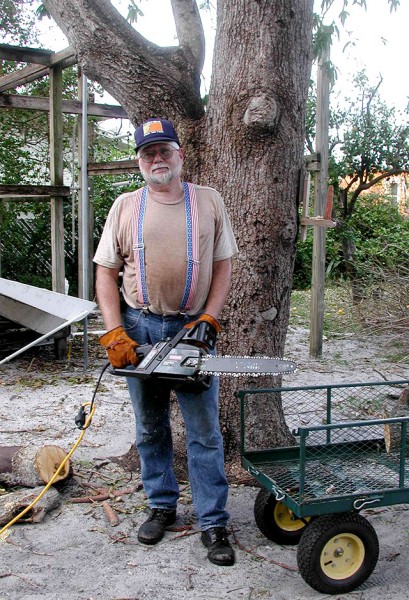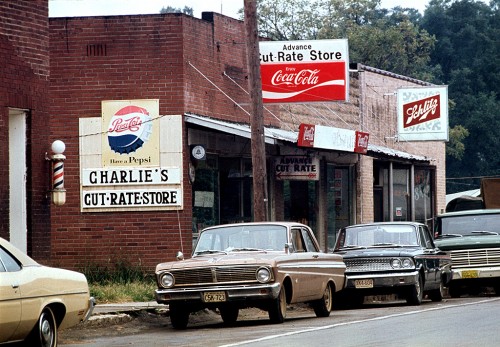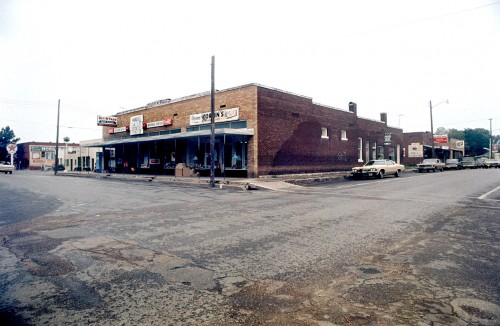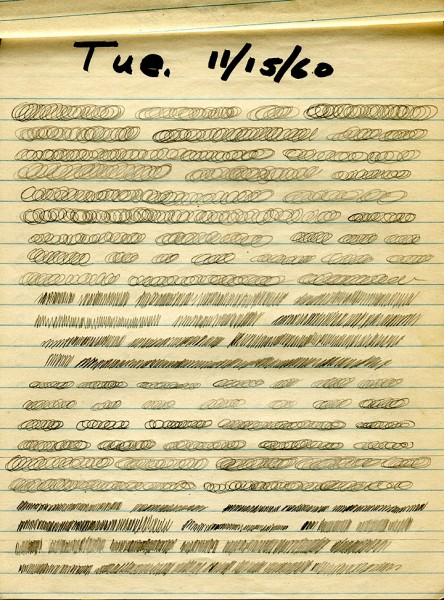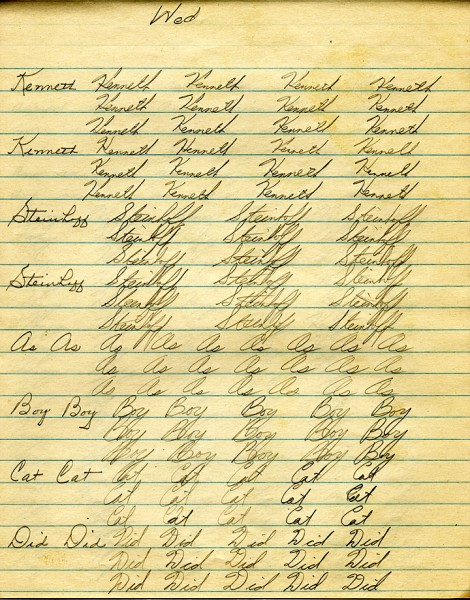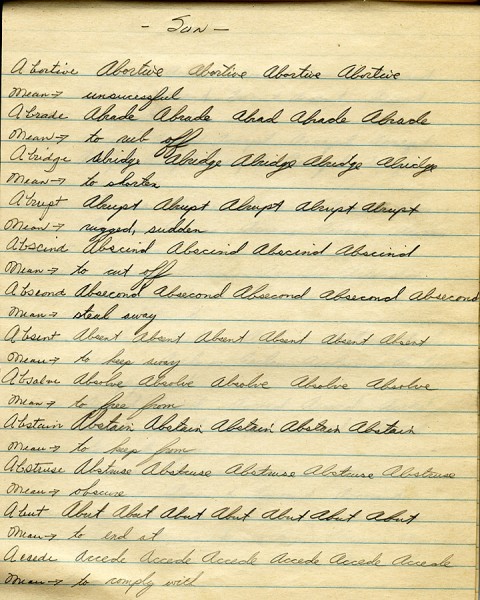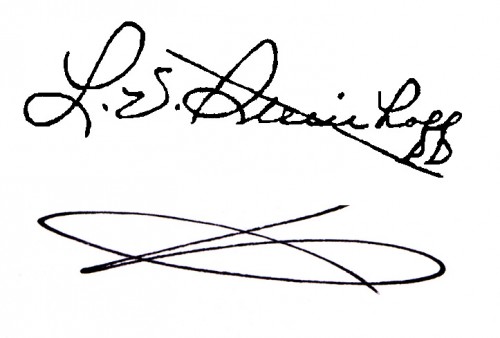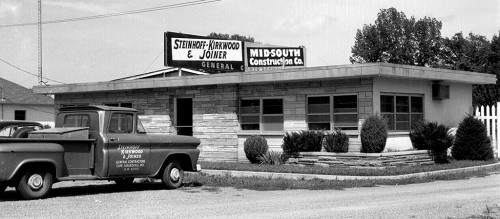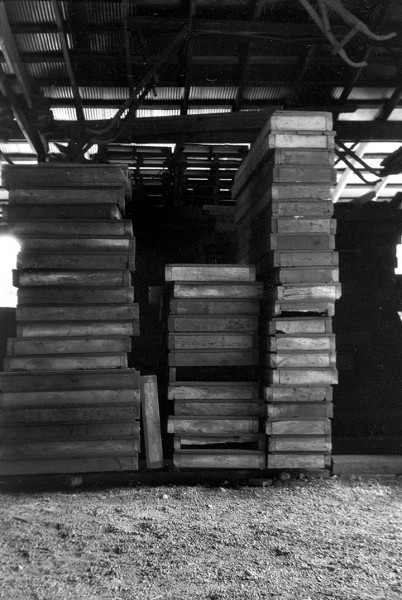I hadn’t forgotten Hurricane Frances, but I HAD forgotten that it was nine years ago that I was hunkered down at the office waiting for it to blow through.
This was a slow mover that was only a Category 2 storm with 105 mph winds, but it just sat on top of us and pounded away for hours.
Winn Dixie roof peeled off
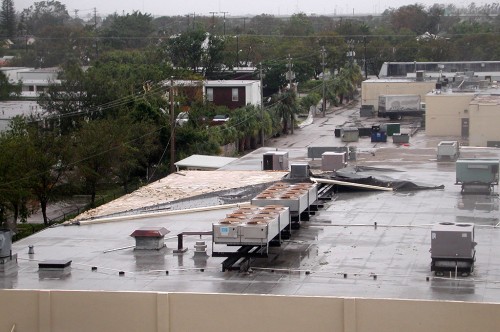 I felt secure at work because the windows were designed for 120-mph winds and I designed the telecommunication area to be even stronger. The architect insisted on having laminated glass windows on the exterior of part of the area for esthetic purposes, but behind the glass, he put a gap, a sheet of drywall, a metal lath, another sheet of drywall and another air gap. He made a mockup and challenged my staff to try to penetrate it by throwing concrete blocks against it. We couldn’t, so I withdrew my request for block walls.
I felt secure at work because the windows were designed for 120-mph winds and I designed the telecommunication area to be even stronger. The architect insisted on having laminated glass windows on the exterior of part of the area for esthetic purposes, but behind the glass, he put a gap, a sheet of drywall, a metal lath, another sheet of drywall and another air gap. He made a mockup and challenged my staff to try to penetrate it by throwing concrete blocks against it. We couldn’t, so I withdrew my request for block walls.
The building went to generator power when the winds hit about 45 miles per hour because the power lines were slapping together causing transformers to blow and surges and sags to come down the line. The big diesel was sucking down fuel so fast and the storm was moving so slowly that we were concerned that we were going to run the tank dry. (It was a 10,000-gallon tank, but it hadn’t been topped off.)
The Winn Dixie supermarket next to us didn’t come out so well. We stood in the 4th floor lobby outside my office and watched the wind get beneath the roof covering and peel it off. The repair they did after the storm must not have been done too well, because we got to see the same thing happen during Hurricane Wilma in 2005.
Neighborhood lost power
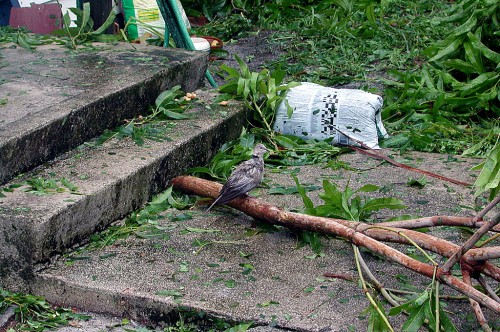 Wife Lila was in Orlando with Son Matt and family and I encouraged her to stay there. We had no power at the house (and wouldn’t for several days), and I was perfectly comfortable sleeping in air-conditioned comfort on air mattress on my office floor. If she came back, I’d have had to fire up the generator I bought after Hurricane Hugo ten years earlier.
Wife Lila was in Orlando with Son Matt and family and I encouraged her to stay there. We had no power at the house (and wouldn’t for several days), and I was perfectly comfortable sleeping in air-conditioned comfort on air mattress on my office floor. If she came back, I’d have had to fire up the generator I bought after Hurricane Hugo ten years earlier.
The two-mile-drive to check out our house as soon as the winds died down was the longest two miles I think I’ve ever gone. (Until 2005 when we got hit by two more storms). I both wanted to hurry up and yet I wanted to keep from seeing if we still had a house as long as possible.
Trees and limbs down
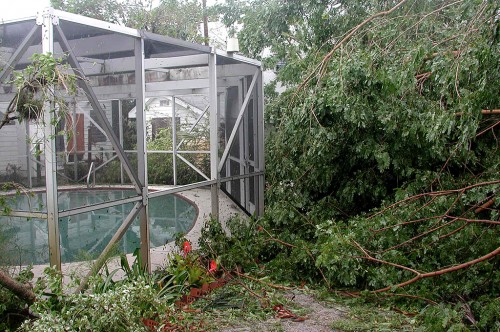 As it turned out, we had a lot of trees and limbs down, but our house, built in the mid-1930s had stood up to the storm quite well. The apartment building across the street didn’t have our luck: a fairly large tree went through the roof.
As it turned out, we had a lot of trees and limbs down, but our house, built in the mid-1930s had stood up to the storm quite well. The apartment building across the street didn’t have our luck: a fairly large tree went through the roof.
Clean-up was NOT fun
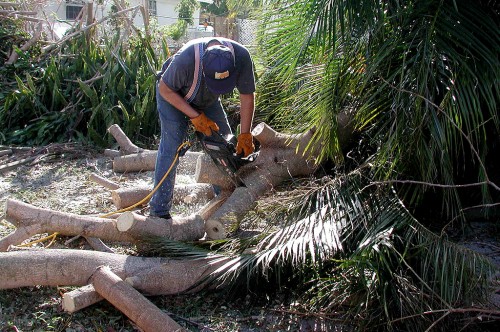 Our side of the street had our power restored in a few days. The neighbors on the other side were fed by a different line and were dark for a week or 10 days. We “haves” on the south side stretched heavy-duty extension cords across the street to the “have-nots” so they could at least keep refrigerators and a few lights running.
Our side of the street had our power restored in a few days. The neighbors on the other side were fed by a different line and were dark for a week or 10 days. We “haves” on the south side stretched heavy-duty extension cords across the street to the “have-nots” so they could at least keep refrigerators and a few lights running.
Fix-a-Flat is your friend
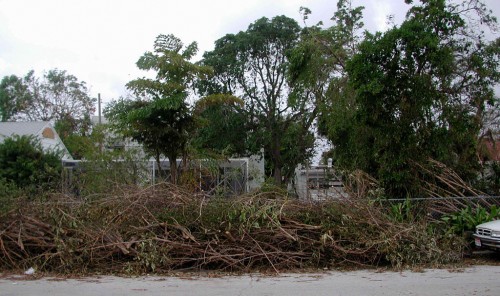 I’m glad a had a stock of Fix-a-Flat. The streets were full of debris, nails, screws and other stuff just waiting for you to run over them.
I’m glad a had a stock of Fix-a-Flat. The streets were full of debris, nails, screws and other stuff just waiting for you to run over them.
As soon as I could, I gave my 3,000-watt generator to Matt and upgraded to a 7,500-watt one with electric start. The best thing I did was buy a kit to adapt it to run on natural gas, propane or gasoline. I also rewired the electrical panel so we could drop off the commercial grid and run the house off the generator if we were careful with our load balancing. It paid off during the next two storms.
I chased 13 hurricanes as a photographer. Let me tell you, covering somebody else’s hurricane is a lot more fun than having one chase you.

